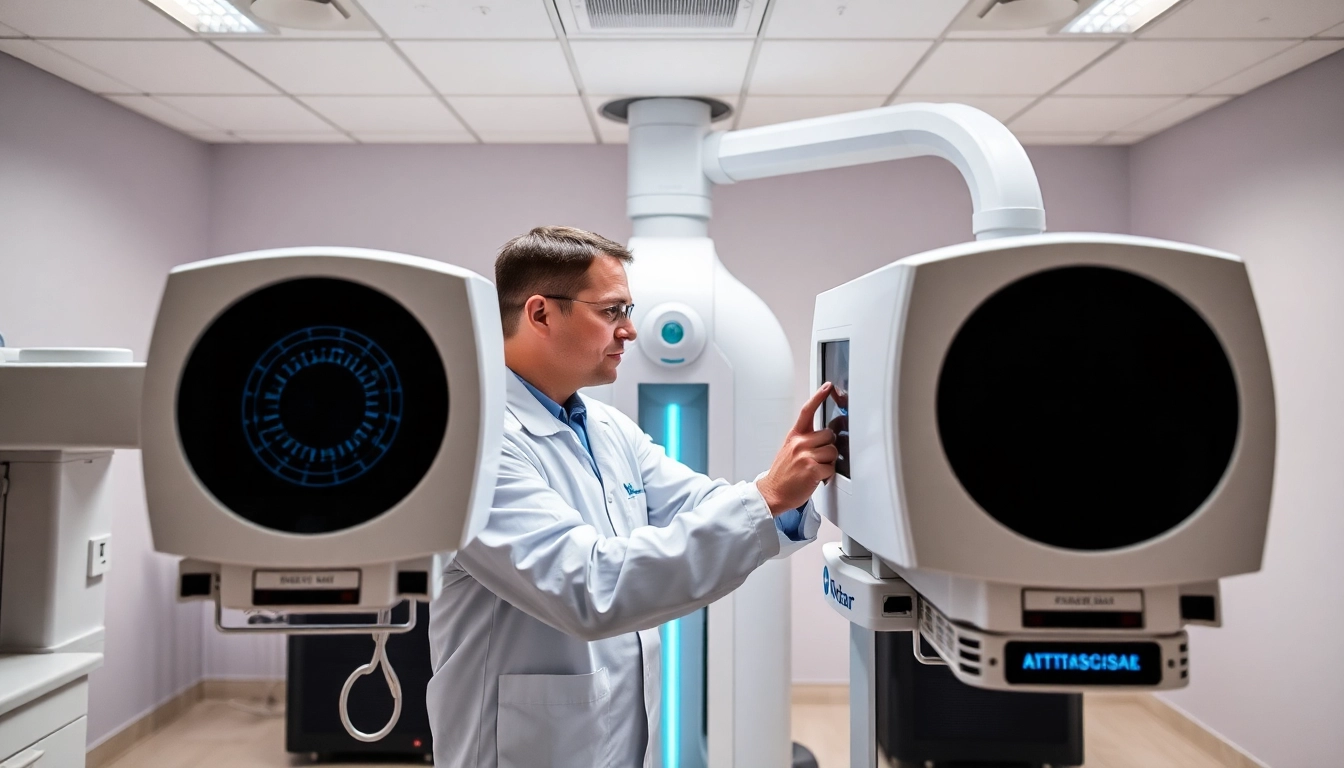Understanding the Importance of Annual Maintenance for X-Ray Machines
Overview of X-Ray Machine Functionality
X-ray machines are pivotal in the medical imaging field, providing critical insights into the human body without necessitating invasive procedures. They operate on the principle of exposing a specific area of the body to radiation, which captures images of bones and organs on film or a digital sensor. This intricate process demands a complicated interplay of sophisticated technology, including high-tension generators, precise detectors, and various software systems tailored to enhance image quality while ensuring patient safety.
Key Benefits of Regular Maintenance
Engaging in annual maintenance for X-ray machines yields numerous benefits integral to both operational integrity and patient safety. Firstly, regular maintenance optimizes performance, reducing downtime by preventing unexpected malfunctions that can disrupt service delivery within healthcare settings. Additionally, routine servicing plays a significant role in enhancing image quality, assuring that diagnostics are accurate and reliable, which is crucial in treatment planning and patient care.
Moreover, regular maintenance translates to extended equipment lifespan, protecting substantial investments made by healthcare facilities. Frequent checks can identify wear and tear, facilitating timely part replacements, which can save costs and avoid comprehensive repairs in the long run. Lastly, adhering to maintenance schedules helps facilities comply with medical regulations, mitigating legal risks associated with equipment failures during critical situations.
Common Issues Prevented by Annual Servicing
Annual servicing covers various tactics aimed at identifying and addressing potential troubles before they escalate. Common issues that routine maintenance can prevent include:
- Calibration Errors: Misalignment or incorrect calibration can lead to distorted images, impacting diagnostic efficacy.
- Mechanical Failures: Over time, components like the x-ray tube can falter, halting operations if not monitored and repaired.
- Electrical Faults: Wiring issues and electronic component failures can cause equipment malfunctions and pose safety hazards.
- Software Glitches: Maintenance checks can ensure that the software is updated, which can enhance performance and patient data security.
What to Expect During an Annual Maintenance Visit
Typical Procedures and Checks Conducted
During an annual maintenance visit, certified technicians will carry out a series of comprehensive checks, including:
- X-ray Tube Inspection: Ensuring the tube is functioning efficiently and safely.
- Calibration Procedures: Verifying that the machine meets required specifications for optimal performance.
- Software Updates: Checking and updating the associated software to ensure the latest features and security protocols.
- Safety Checks: Evaluating shielding and leak radiation to ensure compliance with safety regulations commensurate with both operator and patient protection.
- Cleaning and Maintenance: Thorough cleaning of components, both to maintain sanitary conditions and prevent operational hindrances.
Duration and Cost Considerations
The duration of an annual maintenance visit can vary based on the machine’s complexity and condition but typically lasts between two and four hours. Cost implications can vary significantly, depending on the service provider, geographical location, and the specific needs of the machine. On average, annual maintenance can range from $1,000 to $5,000—an investment that is often outweighed by the costs associated with extended downtime and catastrophic equipment failure.
Documenting Maintenance for Compliance
Accurate documentation during maintenance visits is critical for compliance with healthcare regulations. This documentation should include details about the checks performed, parts replaced, and any observed irregularities. Such records not only demonstrate a commitment to safety and operational efficiency but also help satisfy any audits or inspections by regulatory bodies.
Best Practices for Maintaining X-Ray Machines
Daily Operations Checklist for Technicians
Technicians can optimize machine longevity and performance through a structured daily operations checklist including:
- Visual Inspections: Checking for signs of physical damage or wear.
- Functionality Tests: Running short tests to ascertain optimal functioning without patient exposure.
- Cleaning Protocols: Regular cleaning of the machine and work area to uphold hygiene standards.
- Log Entries: Maintaining a log of operations, noting any anomalies or required repairs.
Importance of Training and Certifications
Continuous education and certifications for technicians play a pivotal role in maintaining high operational standards. Regular training updates employees on the latest technologies and safety protocols concerning X-ray operations. Consequently, certified technicians are adept at identifying issues early, ensuring optimal machine performance and adherence to regulatory mandates.
How to Choose a Reliable Maintenance Provider
Selecting a dependable maintenance provider can be critical to ensuring the longevity and efficacy of X-ray machines. Key criteria include:
- Experience and Expertise: Look for providers with extensive experience in servicing specific models of X-ray machines.
- Accreditations: Ensure that the provider holds relevant accreditations and certifications from reputable organizations.
- Customer Reviews: Consider testimonials and reviews from other healthcare organizations to gauge reliability.
- Response Time: An ideal service provider should guarantee prompt responses to maintenance requests, especially during emergencies.
Advanced Techniques in X-Ray Machine Maintenance
Integration of Technology for Enhanced Maintenance
The advancement of technology offers innovative approaches to maintaining X-ray machines. For instance, predictive maintenance uses data analytics and machine learning algorithms to forecast potential failures based on operational data and historical trends. Implementing smart sensors can monitor the machine’s condition in real-time, alerting technicians to irregularities that may require immediate attention.
Monitoring Performance Metrics
Effective maintenance strategies hinge on tracking performance metrics such as image quality, machine uptime, and maintenance response times. This data helps in assessing not only the operational efficiency of the X-ray machines but also the effectiveness of the maintenance protocols in place. By establishing key performance indicators (KPIs), healthcare facilities can ensure continuous improvement and maintain high service standards.
Case Studies: Successful Maintenance Protocols
Several healthcare institutions have reported remarkable improvements post-enhanced monitoring of their X-ray machine maintenance protocols. For instance, a community hospital that adopted a predictive maintenance strategy noted a 30% reduction in unexpected downtimes over a year. Another case in a large healthcare system showcased how timely interventions based on performance metrics led to improved diagnostic accuracy, directly benefiting patient outcomes.
Frequently Asked Questions About X-Ray Machine Maintenance
What is Included in Annual Maintenance?
Annual maintenance typically includes a thorough inspection of the X-ray machine, calibration and functionality checks, software updates, safety inspections, and cleaning services. All aspects aim to ensure the safe and effective operation of the equipment.
How Often Should Annual Maintenance be Conducted?
As the name implies, annual maintenance is typically conducted once every year. However, depending on the intensity of usage and operational demands, more frequent checks might be beneficial to minimize risks associated with unexpected failures.
Signs That Your X-Ray Machine Needs Immediate Attention
It’s crucial to be vigilant for certain signs that may indicate the need for immediate attention. Such signs include:
- Inconsistent image quality across scans.
- Unusual sounds emanating from the machine during operation.
- Frequent error messages on the machine’s display.
- Delayed startup times or malfunctions during scans.



